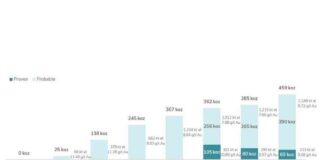European car giants are facing a multitude of challenges as they navigate the transition to full electrification. The road to electric vehicles (EVs) is proving to be a bumpy one, with issues such as a lack of affordable models, slow rollout of charging infrastructure, and the potential impact of tariffs on EVs made in China all posing significant hurdles.
Volvo Cars, a prominent player in the automotive industry, recently made headlines by announcing a shift in its electrification strategy. Initially, the company had set a bold target of selling only EVs by 2030. However, in a move that reflects the challenges faced by the industry as a whole, Volvo decided to adopt a more pragmatic approach. Instead of completely abandoning internal combustion engine vehicles, Volvo now aims for between 90% and 100% of its car sales to be fully electric or plug-in hybrid models by 2030, with the remaining 10% consisting of mild hybrid models.
Other major car manufacturers, including crisis-stricken Volkswagen, Ford, and Mercedes-Benz Group, have also had to rethink their timelines for phasing out internal combustion engine vehicles in Europe. The shifting landscape of the automotive industry has forced these companies to reassess their strategies and adapt to changing market conditions.
Tim Urquhart, a principal automotive analyst at S&P Global Mobility, highlighted the challenges facing manufacturers as they grapple with the transition to EVs. He noted that many companies had initially stopped investing in internal combustion engine technology, only to realize the importance of continued innovation to remain competitive in the market. Governments in key markets have implemented measures to incentivize the adoption of EVs, such as mandated targets for zero-emission vehicle sales. However, the industry is facing a disconnect between regulatory expectations and consumer preferences.
The UK, for example, has introduced a mandate requiring a percentage of new car sales to be zero-emission vehicles, with the goal of achieving 100% by 2035. While these initiatives are intended to reduce emissions and promote sustainability, they also pose challenges for manufacturers struggling to meet the demand for EVs. Urquhart emphasized the need for a balanced approach from both regulators and manufacturers to ensure a smooth transition to electrification.
Volvo Cars’ revised EV plan highlighted several key challenges that the industry is currently grappling with. These include the slow rollout of charging infrastructure, the withdrawal of government incentives in some markets, and the impact of tariffs on EVs in various regions. These factors underscore the need for stable government policies to support the transition away from fossil fuels and facilitate the adoption of EVs.
Despite the short-term uncertainties and challenges facing the industry, analysts emphasize that carmakers cannot afford to ignore the shift towards EVs. The direction of travel towards electrification remains clear, and investments in EV technology are crucial for long-term competitiveness. While the journey to full electrification may be non-linear and fraught with uncertainties, the overall trend towards EVs is undeniable.
Subheadings:
Challenges in the Transition to Electric Vehicles
The transition to electric vehicles poses a myriad of challenges for European car giants, ranging from affordability issues to infrastructure limitations. The shift towards electrification requires significant investments in research, development, and manufacturing to meet consumer demand for sustainable transportation options. However, hurdles such as the slow rollout of charging infrastructure and the potential impact of tariffs on EVs made in China are complicating the industry’s electrification efforts.
Revised Strategies in Response to Market Realities
In light of the challenges posed by the transition to EVs, major car manufacturers like Volvo Cars are reevaluating their strategies to adapt to changing market conditions. The decision to revise electrification targets reflects the need for flexibility and pragmatism in navigating the complexities of the automotive industry. By striking a balance between internal combustion engine vehicles and EVs, companies are aiming to maintain profitability and competitiveness while transitioning towards a more sustainable future.
The Future of Electric Vehicles: Navigating Uncertainties
As the automotive industry grapples with the uncertainties of the transition to electric vehicles, it is essential for manufacturers to stay agile and responsive to changing market dynamics. While short-term challenges may pose obstacles to the adoption of EVs, the long-term trend towards electrification remains clear. By investing in EV technology and adapting to regulatory mandates, carmakers can secure their positions in the market and drive innovation in sustainable transportation solutions.






















